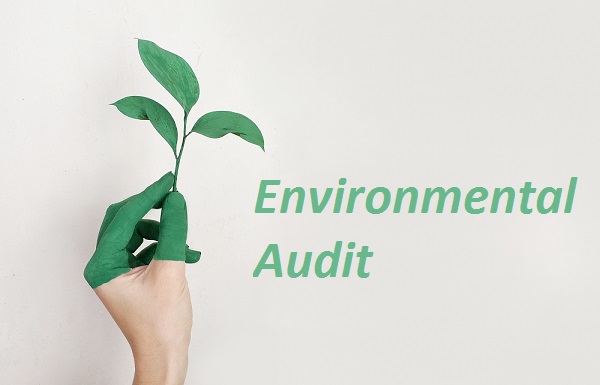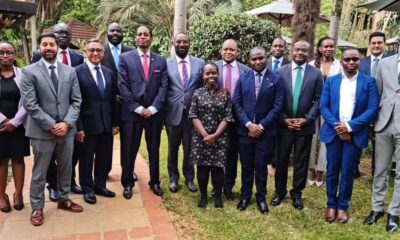By Hon. Prof. Kariuki Muigua, OGW, PhD, C.Arb, FCIArb is a Professor of Environmental Law and Dispute Resolution at the University of Nairobi, Member of Permanent Court of Arbitration, Leading Environmental Law Scholar, Respected Sustainable Development Policy Advisor, Top Natural Resources Lawyer, Highly-Regarded Dispute Resolution Expert and Awardee of the Order of Grand Warrior (OGW) of Kenya by H.E. the President of Republic of Kenya. He is the Academic Champion of ADR 2024, the African ADR Practitioner of the Year 2022, the African Arbitrator of the Year 2022, ADR Practitioner of the Year in Kenya 2021, CIArb (Kenya) Lifetime Achievement Award 2021 and ADR Publisher of the Year 2021 and Author of the Kenya’s First ESG Book: Embracing Environmental Social and Governance (ESG) tenets for Sustainable Development” (Glenwood, Nairobi, July 2023) and Kenya’s First Two Climate Change Law Book: Combating Climate Change for Sustainability (Glenwood, Nairobi, October 2023), Achieving Climate Justice for Development (Glenwood, Nairobi, October 2023) and Promoting Rule of Law for Sustainable Development (Glenwood, Nairobi, January 2024)*
The Constitution of Kenya requires the State to establish systems of environmental impact assessment, environmental audit and monitoring of the environment. In particular, Article 69 obligates the State to set up the systems for, among other, “environmental audit and monitoring of the environment.” At the same time, the State is bound to ensure “to compel any public officer to take measures to prevent or discontinue any act or omission that is harmful to the environment.” There is no doubt that such action which any public officer may be compelled do in include environmental audit and monitoring especially where omission to undertake is clearly harmful to the environment.
EMCA defines “environmental audit” to mean the systematic, documented, periodic and objective evaluation of how well environmental organisation, management and equipment are performing in conserving or preserving the environment. An initial environmental audit and a control audit are conducted by a qualified and authorized environmental auditor or environmental inspector who is an expert or a firm of experts registered by NEMA. In the case of an ongoing project, NEMA requires the proponent to undertake an initial environmental audit study to provide baseline information upon which subsequent environmental audits shall be based. The proponent shall be issued with an acknowledgement letter and an improvement order where necessary.
Environmental audits and monitoring act as follow up tools to determine the extent to which activities being undertaken conform to the environmental impact assessment study report issues in respect of the particular project. The aim of this process is to guard against deviation from the study report which could have detrimental effects on the environment. NEMA is mandated under EMCA to undertake environmental audits of all activities that are likely to have significant effect on the environment and in consultation with lead agencies, monitor all environmental phenomena with a view to making an assessment of any possible changes in the environment and their possible impacts.
Indeed, National Environment Management Authority (NEMA) is obligated under EMCA to identify projects and programmes or types of projects and programme, plans and policies for which environmental audit or environmental monitoring must be conducted under this Act. NEMA or its designated agents is responsible for carrying out environmental audit of all activities that are likely to have significant effect on the environment. An environmental inspector appointed under the Act may enter any land or premises for the purposes of determining how far the activities carried out on that land or premises conform with the statements made in the environmental impact assessment study report issued in respect of that land or those premises under section 58(2) of EMCA.
The owner of the premises or the operator of a project for which an environmental impact assessment study report has been made is bound to keep accurate records and make annual reports to the Authority describing how far the project conforms in operation with the statements made in the environmental impact assessment study report. At the same time, the owner of premises or the operator of a project is enjoined to take all reasonable measures to mitigate any undesirable effects not contemplated in the environmental impact assessment study report submitted and to prepare and submit an environmental audit report on those measures to the Authority annually or as the Authority may, in writing, require.
With respect to environmental monitoring, NEMA is empowered to, in consultation with the relevant lead agencies, monitor: all environmental phenomena with a view to making an assessment of any possible changes in the environment and their possible impacts; or the operation of any industry, project or activity with a view of determining its immediate and long-term effects on the environment. In addition, environmental inspectors are entitled to enter upon any land or premises for the purposes of monitoring the effects upon the environment of any activities carried on that land or premises. The Environment (Assessment and Audit) Regulations, 2003 provide the necessary guidelines on the procedure.
NEMA is still facing challenges in discharging its mandate as it is currently and there is a need to work closely with the county governments in order to be in touch with what is happening across the country. Many of these challenges came to the public limelight on 10th May, 2018, when Kenyans woke up to the shocking news of the collapse of Milmet Dam – also known as Solai Dam – in Nakuru County. Adjacent farms and villages had been washed away in the onrush of the water’s break. Hundreds of people were caught up in the consequent muddy sludge, claiming 47 lives in the downstream flood chaos. The subsequent cases brought against NEMA officials by the Director of Public Prosecutions to hold them liable for the disaster highlighted the challenges that NEMA is facing in discharging its mandate across the country. This, therefore, calls for concerted efforts from all lead agencies under the direction of NEMA to ensure that environmental standards are upheld and enforced across the various sectors.
It has rightly been pointed out that virtually all companies face the possibility of environmental liability costs and as such, it is imperative for the management to make at a least a general estimate of their company’s potential future environmental liability be it from legally mandated cleanup of hazardous waste sites or from lawsuits involving consumers, employees, or communities. Such information could be useful in the following to encourage defensive and prudent operations and waste reduction; improve manufacturing, waste disposal and shipping practices; negotiate and settle disputes with insurance carriers; influence regulators and public policy makers; determine suitable levels of financial resources; reassess corporate strategy and management practices (think green); articulate a comprehensive risk management program; improve public relations and public citizenship; and assess hidden risks in takeovers and acquisitions. Companies and organisations are to engage in proactive environmental risk management as part of their strategic plans in order to avoid costly environmental liability mistakes.
Strengthening environmental compliance and enforcement requires renewed efforts by individuals and institutions everywhere. Government officials, particularly inspectors, investigators, and prosecutors, must exercise public authority in trust for all of their citizens according to the standards of good governance and with a view to protecting and improving public well-being and conserving the environment. The judiciary has a fundamental contribution to make in upholding the rule of law and ensuring that national and international laws are interpreted and applied fairly, efficiently, and effectively. The public as a way of enhancing identification of activities that violate environmental laws as well as increasing the rate of enforcement and compliance with court decisions, by bodies and individuals.
*This is an extract from Kenya’s First ESG Law Book: Embracing Environmental Social and Governance (ESG) tenets for Sustainable Development” (Glenwood, Nairobi, July 2023) by Hon. Prof. Kariuki Muigua, OGW, PhD, Professor of Environmental Law and Dispute Resolution, Senior Advocate of Kenya, Chartered Arbitrator, Kenya’s ADR Practitioner of the Year 2021 (Nairobi Legal Awards), ADR Lifetime Achievement Award 2021 (CIArb Kenya), African Arbitrator of the Year 2022, Africa ADR Practitioner of the Year 2022, Member of National Environment Tribunal (NET) Emeritus (2017 to 2023) and Member of Permanent Court of Arbitration nominated by Republic of Kenya and Academic Champion of ADR 2024. Prof. Kariuki Muigua is a foremost Environmental Law and Natural Resources Lawyer and Scholar, Sustainable Development Advocate and Conflict Management Expert in Kenya. Prof. Kariuki Muigua teaches Environmental Law and Dispute resolution at the University of Nairobi School of Law, The Center for Advanced Studies in Environmental Law and Policy (CASELAP) and Wangari Maathai Institute for Peace and Environmental Studies. He has published numerous books and articles on Environmental Law, Environmental Justice Conflict Management, Alternative Dispute Resolution and Sustainable Development. Prof. Muigua is also a Chartered Arbitrator, an Accredited Mediator, the Managing Partner of Kariuki Muigua & Co. Advocates and Africa Trustee Emeritus of the Chartered Institute of Arbitrators 2019-2022. Prof. Muigua is a 2023 recipient of President of the Republic of Kenya Order of Grand Warrior (OGW) Award for his service to the Nation as a Distinguished Expert, Academic and Scholar in Dispute Resolution and recognized among the top 5 leading lawyers and dispute resolution experts in Band 1 in Kenya by the Chambers Global Guide 2024 and was listed in the Inaugural THE LAWYER AFRICA Litigation Hall of Fame 2023 as one of the Top 50 Most Distinguished Litigation Lawyers in Kenya and the Top Arbitrator in Kenya in 2023.
References
Andresen, S.; Boasson, E. L.; Hønneland, G. International Environmental Agreements: An Introduction; Routledge, 2012.
APLANET. Sustainability indicators: definition, types of KPIs and their use in the sustainability plan. APLANET. https://aplanet.org/resources/sustainability-indicators/ (accessed 2023-06-28).
Batalhao, A., de Fatima Martins, M., van Bellen, H.M., Ferreira Caldana, A.C. and Teixeira, D., ‘Sustainability Indicators: Relevance, Public Policy Support and Challenges’ (2019) 9 Journal of Management and Sustainability 173.
Brown Weiss, E. The Evolution of International Environmental Law. 2011; Framework Principles on Human Rights and the Environment (2018). OHCHR. https://www.ohchr.org/en/specialprocedures/sr-environment/framework-principles-human-rights-and-environment-2018 (accessed 2023-06-11).
Buckley, P ‘Can Corporations Contribute directly to society or only through regulated behaviour’ Journal of the British Academy, 6 (sl), p. 323-374.
Climate Change Act, No. 11 of 2016, Government Printer, Nairobi.
Companies Act, No. 17 of 2015, s. 143 (1) (d), Government Printer, Nairobi.
Constitution of Kenya, 2010, Article 69 (1) (f), Government Printer, Nairobi.
Environmental (Impact Assessment and Audit) Regulations, 2003, Legal Notice No. 101 of 2003, Laws of Kenya.
Environmental Management and Co-ordination Act, No. 8 of 1999, Laws of Kenya, Revised Edition 2019 [1999].
Escobar-Pemberthy, N.; Ivanova, M. Implementation of Multilateral Environmental Agreements: Rationale and Design of the Environmental Conventions Index. Sustainability 2020, 12 (17), 7098.
ESG (Environmental, Social, & Governance). Corporate Finance Institute. https://corporatefinanceinstitute.com/resources/esg/esg-environmental-social-governance/ (accessed 2023-06-11).
Fagerström, A.; Hartwig, G. Accounting and Auditing of Sustainability: A Modelnter Title; 2016.
Farrell, A. and Hart, M., What does sustainability really mean? The search for useful indicators. Environment: science and policy for sustainable development, 40(9), pp.4-31.
MSV. Prasad, ‘Corporate Environmental Governance: A Perception of Indian Stakeholder’, available at https://ecoinsee.org/conference/conf_papers/conf_paper_18.pdf, (accessed on 28/11/2019).
National Environment Management Authority (NEMA) – Environmental Audit (EA). https://www.nema.go.ke/index.php?option=com_content&view=article&id=155&Itemid=27 4 (accessed 2023-06-16).
Reid, J.; Rout, M. Developing Sustainability Indicators–The Need for Radical Transparency. Ecological Indicators 2020, 110, 105941.
United Nations Conference on Trade and Development. Guidance on Core Indicators for Sustainability and SDG Impact Reporting; 2022, p. 1.
Valentin A and Spangenberg JH, ‘A Guide to Community Sustainability Indicators’ (2000) 20 Environmental impact assessment review 381.
Waas, T.; Hugé, J.; Block, T.; Wright, T.; Benitez-Capistros, F.; Verbruggen, A. Sustainability Assessment and Indicators: Tools in a Decision-Making Strategy for Sustainable Development. Sustainability 2014, 6 (9), 5512–5534. https://doi.org/10.3390/su6095512.
Wu J and Wu T, “Sustainability indicators and indices: an overview.” Handbook of sustainability management (2012): 65-86.





 Lawyers2 years ago
Lawyers2 years ago
 News & Analysis3 years ago
News & Analysis3 years ago
 News & Analysis3 years ago
News & Analysis3 years ago
 Lawyers2 years ago
Lawyers2 years ago
 News & Analysis2 years ago
News & Analysis2 years ago
 News & Analysis1 year ago
News & Analysis1 year ago
 News & Analysis3 years ago
News & Analysis3 years ago
 News & Analysis1 year ago
News & Analysis1 year ago





























